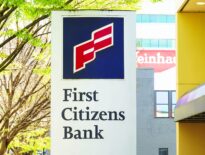Commercial real estate leases usually aren’t structured to offer landlords or tenants any financial incentives to pay for projects that reduce a building’s carbon footprint.
Landlords have little incentive to invest in clean energy projects, such as electric HVAC systems or solar arrays, because utility costs typically are paid by tenants.
As new regulations prod the building sector toward decarbonization, green leases are gaining favor as a way of aligning landlords’ and tenants’ financial interests. Applying to aspects of building operation that affect the environment, they include incentives for tenants to invest in green building projects.
“It’s expensive to retrofit a lot of these older buildings,” said Sharon Leifer, a partner and attorney specializing in commercial leasing at Sullivan & Worcester. “Typically, in a large office building, the landlord is responsible for replacing the roof and the HVAC system and those types of things that would be substantial contributors to how green the building is.”
A massive decarbonization bill is coming due for commercial landlords, as states and municipalities impose new regulations limiting emissions and phasing out fossil fuel-based building systems. A 2020 study by The Cadmus Group consultancy projected nearly $33 billion in retrofit costs for commercial and multifamily buildings in Greater Boston.
Asking tenants to chip in for clean energy projects can be a tall order. But companies can include green leases in their environmental, social and governance strategies, promoting their commitment to sustainability and potentially making them more attractive to potential job candidates.
“Property owners are very focused on being able to say to tenants: ‘Look, our building is sustainable and it’s got all these systems in place to be a green building,’” Leifer said. “And tenants want to be able to say to employees: ‘We’re moving into this building that’s environmentally friendly and we’re taking steps to reduce our impact on climate.’ That’s important for both sides.”
Green leases usually include data-sharing requirements that can protect tenants from inaccurate common area maintenance charges, said Sara Neff, head of sustainability in the Americas for developer Lendlease.

By choosing a more environmentally-friendly building, tenants can please workers, executives and investors concerned about ESG performance. iStock image
‘Revolutionary’ Change to Tenants’ Role
Lendlease is incorporating green lease language both as an office tenant and a landlord. The Australian developer has set an aggressive goal of eliminating all carbon emissions from its global portfolio by 2040 without the use of offsets, Neff said.
“Green leasing is utterly revolutionary,” Neff said. “Tenants control so much of our buildings’ energy consumption, so getting it off to the right start through a lease makes sure everybody saves money.”
Typical green lease clauses include requirements for submetering of individual tenant spaces, cost sharing of capital improvements and agreements for tenants and landlords to share data on energy use, Neff said. Cost-sharing agreements typically last for the life of the equipment or payback period – whichever is shorter – with the landlord receiving the benefit of the savings thereafter.
The Australian real estate investor developed and operates the Clippership Wharf apartment and condominium development in East Boston and is constructing the Forum lab complex at 60 Guest St. in Brighton.
In its multifamily portfolio, Lendlease includes submeters in individual units, and it’s incorporating green lease language for future tenants of the Brighton life science development, Neff said.
Potential new regulations on building energy performance in Boston and other cities point to the need for landlords to gather as much data as possible on building systems and individual tenant spaces. Since 2013, Boston’s Building Energy Reporting and Disclosure Ordinance (BERDO) has required owners of buildings over 20,000 square feet to monitor energy usage, with the expectation that the city will start to require reductions in emissions starting in 2024.
“[BERDO] will be hugely impactful,” said Russell Unger, a partner at the nonprofit Rocky Mountain Institute which advocates for widespread adoption of green leasing practices. “We live in an environment where you have a lot of things coming together: powerful local regulations developed in concert with industry, tenants that have prioritized ESG, and tools like tax credits from the Inflation Reduction Act that make this more effective.”
IRA Could Deliver Cost Savings
Beyond landlord-tenant cost sharing, a buffet of new tax incentives could reduce the private sector’s financial burdens for decarbonization.
The Inflation Reduction Act of 2022 will deliver $370 billion over the next decade in climate programs.

Steve Adams
An investment tax credit provides new incentives for projects such as energy storage and microgrid controllers. And the IRA’s Section 179D made real estate investment trusts eligible to receive tax breaks for energy-efficient building projects effective Jan. 1, providing a new incentive to some of the biggest and deep-pocketed commercial landlords, Unger noted.
A 2015 study by the Institute for Market Transformation, a nonpartisan group focused on improving building performance, placed the overall energy cost savings from implementation of green leases at up to 22 percent.
“Broadly, there is a lot of money to be saved with energy efficiencies,” Unger said. “Landlords are saying, ‘If you want to become my tenant, you’ve got to play a part in this.’”




 |
| 

